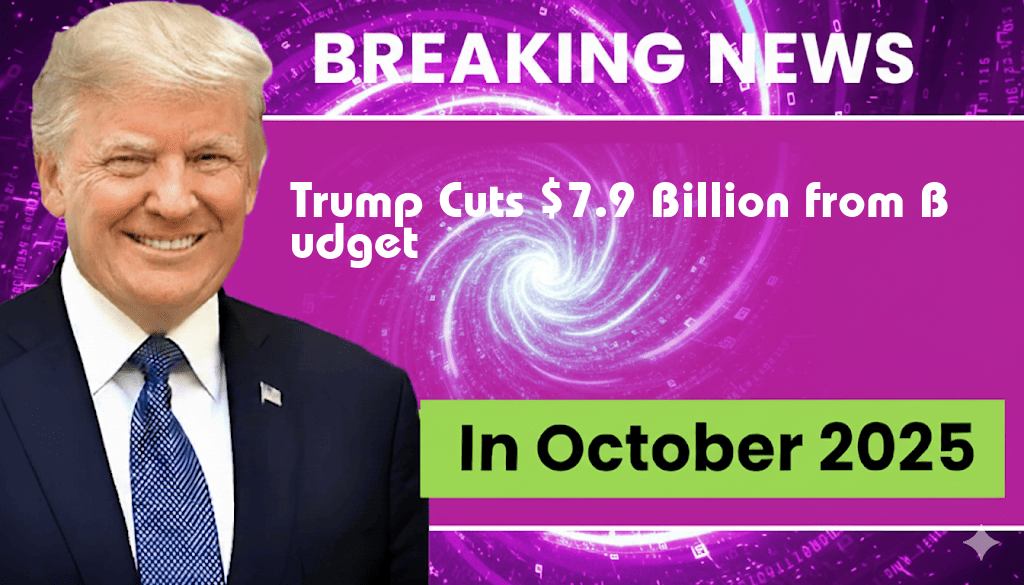In a significant move that has sent ripples through the political landscape, former President Donald Trump has announced the implementation of the Rescissions Act, aimed at cutting approximately $7.9 billion from the federal budget. The legislation, which seeks to reduce government spending, has sparked debate among lawmakers and economists regarding its potential implications for various social programs and the overall economy. The cuts, effective immediately, focus on reallocating funds that had been earmarked for programs deemed inefficient or unnecessary by the Trump administration. This initiative highlights the ongoing struggle within Congress over fiscal responsibility and the priorities of federal spending.
Details of the Rescissions Act
The Rescissions Act is designed to target specific areas of the federal budget that Trump and his team argue are wasting taxpayer money. Key highlights of the act include:
- Defense Spending: Some reductions will affect non-essential military programs.
- Domestic Programs: Funding for various social services, including education and healthcare initiatives, will face significant cuts.
- Infrastructure Projects: Certain federally funded infrastructure projects will be delayed or downsized.
Rationale Behind the Cuts
The Trump administration has justified these budget cuts as necessary to streamline government operations and eliminate wasteful spending. According to officials, the intent is to redirect resources towards more effective and impactful programs. “We’re committed to ensuring that every dollar spent by the government is used efficiently,” Trump stated during a press briefing. Supporters of the act argue that reducing the deficit and prioritizing fiscal discipline are essential for long-term economic growth.
Reactions from Lawmakers
The announcement of the Rescissions Act has elicited mixed reactions from lawmakers across the political spectrum. Some Republican leaders have hailed the cuts as a step in the right direction, emphasizing the importance of reducing the national debt. However, many Democrats and some moderate Republicans have voiced concern over the potential impact on vulnerable populations.
Representative Nancy Pelosi, the House Minority Leader, criticized the act, stating, “These cuts would jeopardize essential services that millions of Americans rely on. We must invest in our communities, not strip away vital resources.” Other critics warn that the cuts could stifle economic recovery efforts amid ongoing challenges posed by the pandemic.
Impact on Social Programs
Among the most contentious aspects of the Rescissions Act are the cuts to social programs. The following table summarizes some of the key areas affected:
| Program | Estimated Cut Amount | Impact |
|---|---|---|
| Education Funding | $2 billion | Reductions in federal aid for schools. |
| Healthcare Services | $1.5 billion | Potential delays in Medicaid reimbursements. |
| Environmental Programs | $1 billion | Less funding for climate change initiatives. |
| Infrastructure Projects | $3.4 billion | Delays in road and bridge repairs. |
Long-Term Economic Considerations
Economists are divided on the long-term implications of the Rescissions Act. While some argue that cutting government spending may help reduce the national deficit, others caution that such austerity measures could hinder economic growth, especially in recovery phases. According to a report by the Forbes, severe budget cuts can lead to a decrease in consumer spending and investment, potentially stalling economic recovery.
Looking Ahead
The Rescissions Act sets the stage for a contentious debate in Congress as lawmakers grapple with the implications of these cuts. As discussions unfold, stakeholders across various sectors will be closely monitoring the situation, weighing the potential benefits of reduced spending against the risks posed to essential services and economic stability. The future of the Rescissions Act and its effects on the federal budget remain uncertain, but its introduction has undoubtedly reignited discussions on fiscal policy and government accountability.
For further information on the Rescissions Act and its implications, you can visit the Wikipedia page for a detailed overview.
Frequently Asked Questions
What is the purpose of Trump’s Rescissions Act?
The Rescissions Act aims to cut unnecessary spending from the federal budget, specifically targeting programs that are deemed ineffective or outdated.
How much funding is being cut under the Rescissions Act?
The Rescissions Act is set to reduce the budget by $7.9 billion, impacting various government programs and allocations.
Which programs are affected by the budget cuts?
The budget cuts under the Rescissions Act affect a range of programs, including those related to healthcare, education, and infrastructure, although specific details may vary.
What are the potential consequences of the Rescissions Act?
The potential consequences of the Rescissions Act include reduced funding for essential services, which may impact communities and programs reliant on federal assistance.
Is the Rescissions Act likely to face opposition?
Yes, the Rescissions Act is expected to face opposition from various lawmakers and advocacy groups who argue that the cuts could harm vulnerable populations and essential services.

Leave a Reply